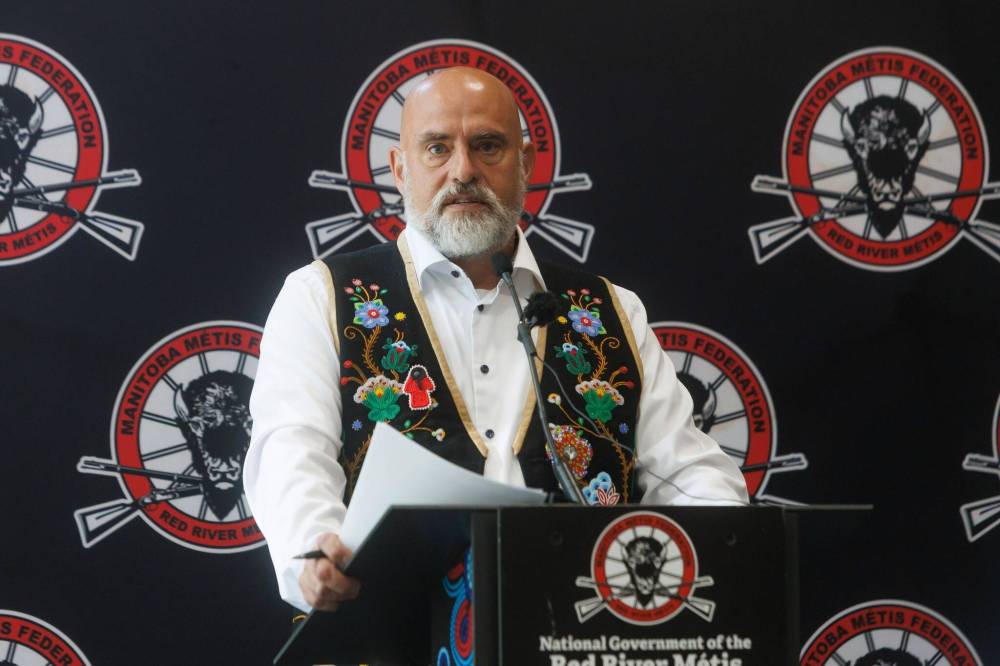The City of Winnipeg is partnering with Indigenous organizations to determine how best to protect local parks, urban forests, waterways and other natural gems, while also obtaining more green space.
The city is seeking a consultant to create a green space and natural corridors bylaw, biodiversity policy and a strategic plan to put it all in place, to be developed with Indigenous leaders.
“The goal is to establish a vision that will enhance the quality of life for future generations of this city,” said Mayor Scott Gillingham.

MIKE DEAL / FREE PRESS FILES
Will Goodon, the Manitoba Metis Federation’s minister of housing and property management, said he’s glad the city is including Indigenous perspectives as it looks to preserve green space.
The Assembly of Manitoba Chiefs, Manitoba Keewatinowi Okimakanak, Manitoba Métis Federation, Southern Chiefs’ Organization, Treaty One Nation and Tunngasugit – Inuit Resource Centre have signed up to help develop the strategy.
Gillingham said the partnership marks an important step toward reconciliation that will help conserve land within and beyond city limits.
“The rivers and the forests don’t respect municipal boundaries and so we need to be thinking regionally when we establish some of our plans,” he said. “This co-development process is a way to acknowledge that Indigenous communities have been stewards of these waters and lands for thousands of years, before Winnipeg was ever established as a city.”
In 2021, Winnipeg city council set a long-term target to add 1,000 acres of locally accessible green space, which could include parks, golf courses, urban forests, waterways and other areas.
Gillingham said this process will help determine how best to add such lands, which could include buying properties or receiving them through donations. He noted a limited budget hinders how much space can be purchased.
“Land is very expensive and, so, certainly, that’s a challenge,” he said.
Will Goodon, a Manitoba Métis Federation minister, said he’s pleased the city will include Indigenous perspectives in the process.
“We never would have seen something like this happen 10 years ago, 20 years ago. It’s always positive where we can have our voices added to this important issue,” said Goodon.
He hopes the process will help preserve natural spaces with historical significance, such as those used by Louis Riel during negotiations that led Manitoba to become a province.
“We want to remember what our ancestors brought to this area. The green spaces are an important part of that,” said Goodon.
He stressed the bylaw and policy must ensure green spaces aren’t all just plots filled with grass but incorporate a wide variety of plants that support birds, animals and pollinating insects.
Connections between green spaces are also very important, said Goodon.
“A lot of times, in cities, parks are little islands unto themselves. We’ve got some great opportunities here… to use natural waterways as connectivity between green spaces because ecosystems aren’t naturally just islands in seas of pavement and brick. We have to make sure that the land has the ability to thrive and survive,” he said.
Since 2021, 47 parks have created 200 additional acres of green space in Winnipeg, mainly within new developments, said Shauna Prociuk, a project manager for the city.
Prociuk said preliminary goals for the bylaw and policy do call to preserve green space corridors, such as riverbanks.
A request for proposals calls for the plan to study vegetation on all land within Winnipeg, both privately and publicly owned, noting the list could include parks, school yards, golf courses, waterways, cemeteries, boulevards, retention ponds, urban tree canopies and utility corridors.
The consultant is expected to devote at least 10 per cent of the project budget to Indigenous peoples, organizations or companies and integrate “First Nations, Métis and Inuit knowledge of land, community and ecology” in their work.
The bylaw must also aim to prevent natural environments from being lost or damaged due to development or climate change.
A final green space bylaw is due in September 2026, while a final biodiversity policy is expected in December 2026.
The city budgeted $500,000 for the contract.
joyanne.pursaga@freepress.mb.ca
X: @joyanne_pursaga

Joyanne Pursaga
Reporter
Joyanne is city hall reporter for the Winnipeg Free Press. A reporter since 2004, she began covering politics exclusively in 2012, writing on city hall and the Manitoba Legislature for the Winnipeg Sun before joining the Free Press in early 2020. Read more about Joyanne.
Every piece of reporting Joyanne produces is reviewed by an editing team before it is posted online or published in print — part of the Free Press‘s tradition, since 1872, of producing reliable independent journalism. Read more about Free Press’s history and mandate, and learn how our newsroom operates.
Our newsroom depends on a growing audience of readers to power our journalism. If you are not a paid reader, please consider becoming a subscriber.
Our newsroom depends on its audience of readers to power our journalism. Thank you for your support.